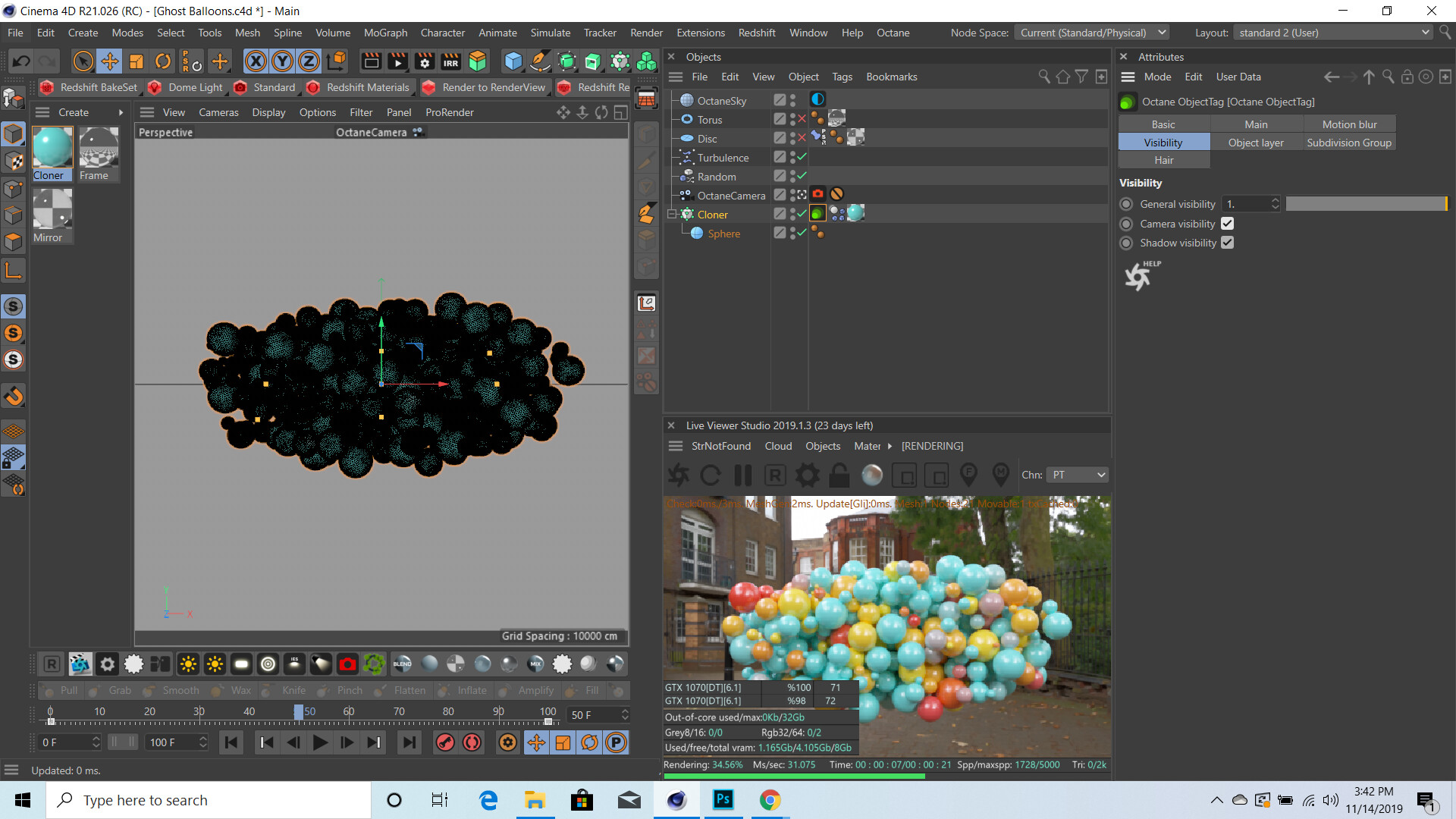

samples quite high and then rely on the adaptive sampling to figure out which pixels actually need that many samples and which. Adaptive Sampling is a rendering technique that disables sampling for pixels that have reached a specified noise threshold. The one thing I admire about Cornelius' work is the level of detail that he gets into his renders. Adaptive Sampling with Octane Render for Cinema 4D An excerpt from What’s New in Octane Render v3.x. If we look at Cornelius' page you can see it's this 55 hertz image here and if we scroll down you can see the image in all it's glory there and you can notice that there's so much detail going on and there's a really lovely quality of light to this image as well.
#Buy octane render cinema 4d movie#
I wanted to share some examples of work in this movie and you can see on the OTOY website the background image here is by an artist called Cornelius Dammrich.

It's important to note that Octane currently only works with Nvidia GPUs, because it utilizes CUDA cores during rendering. So if you're ready let's get started.- Octane Render for Cinema 4D is a plugin that extends Cinema 4Ds rendering capabilities to use OTOY's Octane GPU Render engine inside Cinema 4Ds layout.
#Buy octane render cinema 4d how to#
My goal by the end of this course, is that you will have a firm foundation of how to use Octane Cinema 4D. Finally, I discuss Octane's render settings, including how to optimize them, and how to use Octane's multi parts workflow. Like Octane Scatter and the ability to create volumetric effects such as fog. Octane for Cinema 4D has additional features which we will also dive into. We'll explore Octane's lighting system and the thin lens camera where we can create effects such as depth of field and motion blur. Then, we'll dive deeper into working with materials including the new blend and metallic materials introduced in Octane 3.08. And we'll create a layout that we can use in Cinema 4D when working with Octane. I'll show you how to use the live viewer. Before we dive deeper into Octane for Cinema 4D, we go over a quick start guide, so you're set up for success. I'll start by discussing what Octane Render is and what you could do with this versatile third party renderer. Hi, my name's Andy Needham and welcome to this course on learning the essentials of Octane for Cinema 4D. The course wraps up with a challenge that will allow you to practice your newfound skills. He shows how to optimize your render settings and use a multi-pass workflow to enable you to get the most flexibility and control over your scene.

Andy also reviews Octane Scatter, volumetric effects like fog, and the new Toon materials and lights. Then dive deep into materials, including the blend and metallic materials introduced in Octane 3.08 the Octane lighting system and the thin-lens camera, which enables effects such as depth of field and motion blur. Andy then explores the Live Viewer-the heart of the engine, which provides instant visual feedback on your project-and C4D layouts for Octane. It begins with a quick-start guide, designed to get you up and running with Octane in 30 minutes or less. In this course, mograph artist Andy Needham introduces members to this critical tool for 3D modeling and design. After Effects, Render Engines like Octane, Redshift and Arnold. It renders images in a much shorter time than a standard CPU renderer. Regular topics are anything from Cinema 4D tips & tricks to features & woes. OctaneRender is a popular third-party render engine for Cinema 4D.


 0 kommentar(er)
0 kommentar(er)
